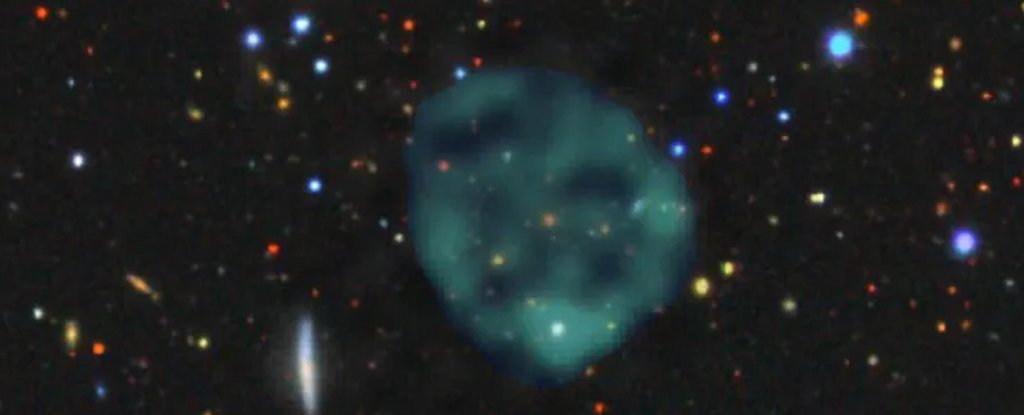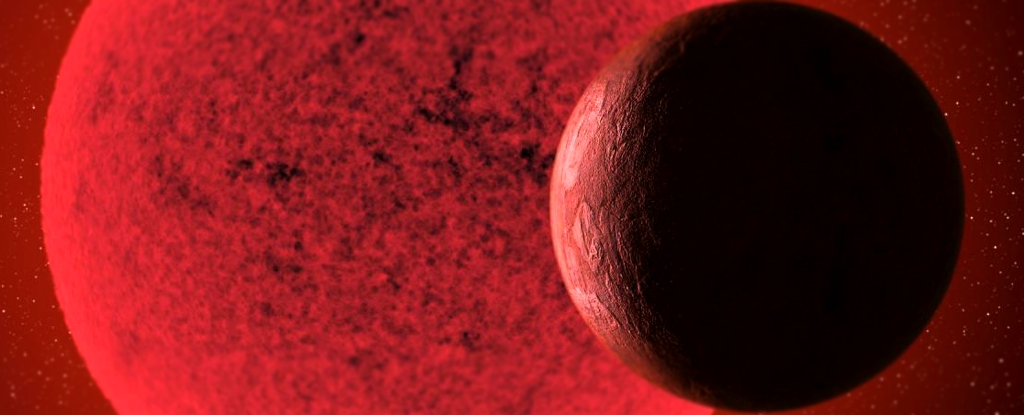Mysterious, ghostly circles in deep space that have been baffling astronomers since their discovery in 2019 might finally have an explanation.
According to a new analysis, the faintly glowing, giant blobs are shockwaves carved by tremendous winds blowing out from galaxies at their centers.
These aren’t just ordinary galaxies, though. They are galaxies that have undergone or are going through starbursting – a period of intense star formation, a literal burst of massive stars that are born and die in rapid succession, ending their lives in spectacular supernovae.
“These galaxies are really interesting,” explains astrophysicist Alison Coil of the University of California San Diego, who led the research.
“They occur when two big galaxies collide. The merger pushes all the gas into a very small region, which causes an intense burst of star formation. Massive stars burn out quickly and when they die, they expel their gas as outflowing winds.”
The team’s analysis suggests that this gas is then pushed outward and caught up in the galactic winds that stream from the galaxy, creating a powerful, spherical outflow that creates a shockfront where it slams into the surrounding, tenuous intergalactic medium.
frameborder=”0″ allow=”accelerometer; autoplay; clipboard-write; encrypted-media; gyroscope; picture-in-picture; web-share” allowfullscreen>
Odd radio circles, or ORCs, are pretty much exactly what they sound like. They are circles in deep space that have been detected by powerful radio telescopes, and only radio telescopes; they have not been detected in other wavelengths. They also appear brighter around the edges, like bubbles.
The radio emission looked a bit like the light seen in other shockwaves, and the apparent spherical shape resembled objects like planetary nebulae or supernova remnants, only much, much bigger. Astronomers were mystified… but then, last year, we got another clue. In the center of each ORC, scientists found a galaxy.
This suggested that the ORCs somehow originated in a central galaxy, expanding outwards. Scientists thought the most likely explanation was an explosion of hot gas expanding outwards.
Coil and her colleagues had been investigating starburst galaxies, and wondered if the phenomenon was somehow related to this powerfully active, but relatively brief stage that some galaxies are observed to undergo. But there wasn’t much data outside radio observations on the objects, so they used the WM Keck Observatory to obtain optical data on one of the ORCs.
They found that ORC 4, as it is known, had a whole bunch of stars that are around 6 billion years old. This suggests that the galaxy underwent a burst of star formation, ending about a billion years ago.
The next part was to conduct computer simulations to determine if this burst of star formation could have produced an expanding bubble around the galaxy. And, well, it is indeed possible.
In order to reproduce the observed ORC, a galactic wind starting at a velocity of around 450 kilometers (280 miles) per second would emanate from the galaxy for about 200 million years, spurred by a high rate of supernova explosions. At this point, the wind would die down, but the hot gas would continue to travel outwards in a bubble, while the colder gas would fall back into the galaxy.
This does suggest, the researchers say, that the ORCs are produced by galactic outflows, possibly following a period of intense starburst.
“To make this work you need a high-mass outflow rate, meaning it’s ejecting a lot of material very quickly. And the surrounding gas just outside the galaxy has to be low density, otherwise the shock stalls. These are the two key factors,” Coil explains.
“It turns out the galaxies we’ve been studying have these high-mass outflow rates. They’re rare, but they do exist. I really do think this points to ORCs originating from some kind of outflowing galactic winds.”
If this is the case, it raises some interesting questions. How long does an ORC last before it becomes too faint to see? How common is the phenomenon? Does it happen to all starbursting galaxies, or do there need to be specific conditions? Is starbursting a necessary precursor?
Obviously there’s a lot we still don’t know about these strange blobs in the sky – but learning more about them could be a clue that eventually helps us better understand how the Universe evolves.
The research has been published in Nature.





